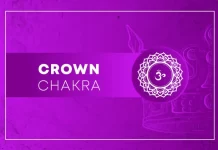If you’re seeking to learn the real essence of yoga, then apart from yoga asana, Pranayama & other practices, “Yoga Sutras of Patanjali (YSP)” is one master key you must know about.
To put it another way, the Yoga Sutra Project (YSP) is a collection of all the information, techniques, instructions, and challenges encountered along the way to becoming a yoga practitioner.
But isn’t it amazing that someone could write such a profound philosophical work over such a long period of time?
If Patanjali had not compiled the summaries of the scriptures and the oral traditions of the rishis into the “Yoga Sutras,” it is unclear how yoga developed and what its original purposes were.
In this thorough book, I go into detail about Patanjali’s mythological origin story, his earthly birth, and the events that inspired him to produce the most accurate yoga treatise. A summary of the first four chapters of the Yoga Sutra follows, in which I outline each sutra’s contents.
So before we begin elaborating on what ‘Yoga Sutras’ are, let’s know about Patanjali.
Who was Patanjali?
By day, Patanjali was simply another sage of ancient India, but by night, he was a master grammarian, psychologist, and doctor of medicine. As a result, Patanjali is recognized for having expertise in three key fields.
- He shared his yoga expertise to help people purify their minds as a wonderful psychologist.
- He was a wonderful physician who taught us the art and science of Ayurveda to cleanse the body.
- In order to improve speech, Patanjali created the Mahabhashya as a grammarian.
Many Patanjali devotees repeat his 108 names To receive Lord Patanjali’s blessings on your yoga path, visit However, we typically utilize this invocation at the start of a yoga class to salute Patanjali.
Invocation to Sage Patanjali
I respectfully bow down to Patanjali, the greatest of the sages (Pravaram Muninam), who gave us the science of yoga to purify our Chitta (mind), grammar to employ words, and Ayurveda to cleanse our bodies of pollutants.
Other names for Patanjali include Gonardiya and Gonikaputra (son of Gonika Yogini). The name Patanjali literally meaning really tells the tale of Patanjali’s birth. According to legend, when he was born, he “dropped from heaven” (Pata means “fall”) with his hands clasped (Anjali – one of the yoga mudra). That is how the moniker Patanjali was created.
History of Sage Patanjali
Although Patanjali’s birth date is unclear, the majority of scholars assume he lived between the second and fourth centuries CE. [efn note] Patanjali can be found at https://en.wikipedia.org/wiki/Patanjali. approximately 2500 years ago.
Despite the fact that yoga has a 5000-year history and that one of its most important texts, the yoga sutra, only emerged 2500 years later, It suggests that the yoga system was originally created long before Patanjali was born.
Hindu religious texts, known as Puranas [efn_note] Purana https://www.newworldencyclopedia.org/entry/Purana [/efn_note] describe mythological stories of the specific gods. The birth story of sage Patanjali is also mentioned in the Puranas.
NOTE: These stories are passing through ages so there is no evidence or fact behind actual events mentioned in them.
Mythological Story Behind Patanjali: Birth as a Snake
The snake servant of the Hindu god Vishnu known as Sheshanaga is the first character in the Patanjali narrative. Lord Vishnu typically lays on the thousand-headed snake known as Sheshanaga.
1. Shiva’s Dance & Weight Gain of Vishnu
When Lord Shiva was dancing, he was also known as Nataraja, the “lord of the dance.” Vishnu was unable to contain himself in the face of his dance’s astounding splendor, and his body started to vibrate. Vishnu’s vibratory body made him so heavy that Sheshanaga found him uncomfortable.
When Shiva’s dance is through, Vishnu’s weight immediately returns to normal. Snake then questioned Lord Vishnu:
What was what causes your weight gain instantaneously?
Then, after hearing about Shiva’s dance from Lord Vishnu, Sheshanaga voiced his wish to master it in order to appease his lord, Lord Vishnu. Vishnu was moved by his dedication at this point and foretold that Shiva himself would give him the blessing to become an earthly form where he could study this art.
2. The incarnation of Sheshanaga as Patanjali
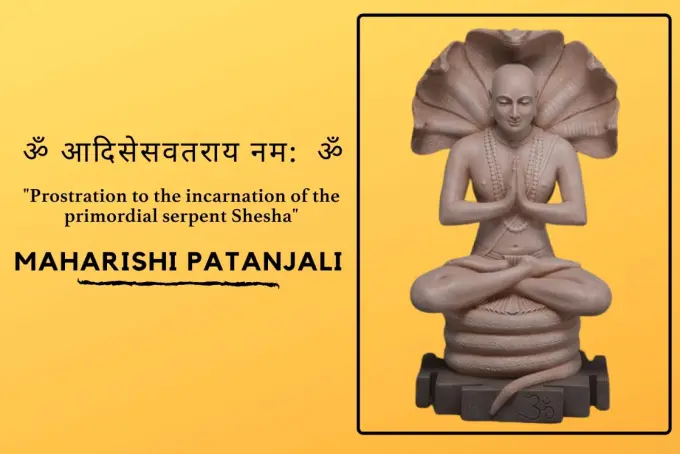
As was previously said, Shiva gave Sheshanaga the blessing to be born on Earth, and he was born of a yogini by the name of Gonika.
Gonika was performing penance in order to have a son to whom she might impart all of her wisdom and expertise. She contemplated the Sun, the only discernible earthly God, as an offering of her austerity. She linked her hands while keeping her eyes closed, and when she opened them, she was astounded to see a little serpent wriggling within her palms. She was even more astounded when this little serpent developed a half-human form within a short period of time and begged to be accepted as his mother with folded palms. Gonika adopted him as her son at his request.
Gonika named his son Patanjali, as Pata means “fall from heaven” & Anjali referred to a hand gesture (hand joining in Namaste) that he made when he came into her hands.
In the same manner, Patanjali enters the world.
Then his mother, Gonika, began imparting to him all the wisdom and insight she had learned from yoga.
How “Yoga Sutras” Came Into Existence?
When Patanjali had learned everything there was to know about yoga from her mother, he decided to share it with others for the benefit of individuals and society.
The origin of Patanjali’s teachings as the Yoga Sutras is explained by another tale.
1. The Lesson of 1000 Disciples & 1 Guru
Patanjali made the decision to teach the 1000 people about yoga in a hall where he would remain hidden behind a curtain and the others would be on the other side of the screen. These 1000 individuals became Patanjali’s first 1000 disciples.
All of his 1,000 followers are required to concentrate just on him and his voice while he speaks, and they are not allowed to leave the room until his lesson is over. However, they somehow disregard this Patanjali rule.
When Patanjali began teaching yoga to 1,000 students, every single one of them was paying close attention and soaking it all in. One out of every 1000 students left the room for a bit during this time for an unknown reason.
Another student peered behind the screen because he was quite inquisitive about what was going on there. As a result of doing this and breaking the rule, all 999 students present in the room were burned to ashes. At this, Patanjali became quite dejected.
The student who had been absent from the hallway for some time then returned at the same time. To watch everyone reduced to ashes scared him. He prayed to Patanjali to pardon his transgression of the law.
2. Curse of Patanjali to His Disciples
Patanjali experienced some relief that at least one of his followers was still alive. However, because some of the students had disobeyed the rules, he crushed them all and turned them into Brahmarakshas (ghosts hanging from trees), saying:
You can only be liberated from my curse when you are able to teach a person the whole yogic knowledge I gave you.
Brahmarakshas, a ghost that is suspended from a tree, searched for a suitable candidate to get the knowledge of yoga for a very long time without success. Everyone who walked by was asked to learn yoga by Brahmarakshas, but nobody expressed an interest in studying with a ghost.
Then, out of mercy for the Brahmarakshas, Patanjali came to him to acquire knowledge of yoga. To free them from his own curse, Patanjali did this by becoming the disciple of the disciple.
3. The Origin of “Yoga Sutra”
Now, Patanjali began studying yoga with the Brahmarakshyasa as a student. While studying it, Patanjali transcribed on palm leaves all of the yoga knowledge he was acquiring from his Guru (Brahmarakshyasa) in the form of equations. In essence, these equations were a condensed version of the lengthy explanation of texts known as sutras today.
The Yoga Sutras of Patanjali are a collection of all the sutras that Patanjali used to record his knowledge of yoga on palm leaves (YSP).
All of this had to do with Patanjali and the Yoga Sutras’ fabled genesis. Only a story, not an explanation, is provided with sculptures and Puranas, but the solutions are always concealed within the narrative. We only need to connect them to the appropriate thing.
Let’s look at a couple of solutions that may have crossed your mind as you read the story.
Question 1: Why was Patanjali sitting behind the screen? Why he does not allow anyone to see him behind the screen?
It’s possible that Patanjali was attempting to say that it doesn’t matter who the instructor or the teacher is with all of this. Regardless of whether you are learning anything from a professor with advanced training or a bagger, the knowledge itself is what counts. Perhaps this explains why Patanjali disseminated all of his wisdom from behind a screen, never speaking aloud or revealing his own identity.
Question 2: Why were Patanjali’s disciples turned to ashes & crushed by him?
They might have broken the rule, which would be a straightforward explanation. Second, Patanjali’s curse may be intended to demonstrate that yoga is a strict discipline that must be mastered in accordance with certain guidelines. You must be disciplined and in control of all your wants if you want to study yoga.
Yoga Sutras of Patanjali (YSP)
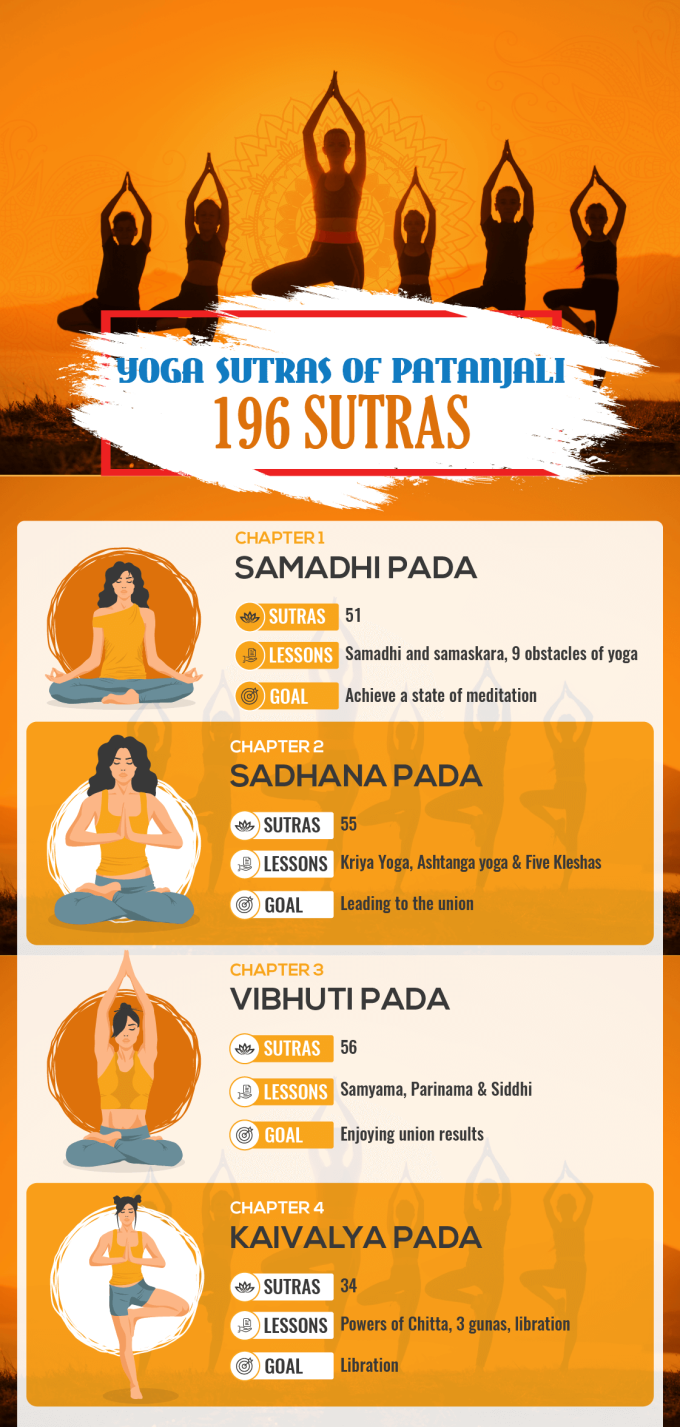
In Hinduism, the yogic system is one of the six philosophies (Shad-Darshans [efn_note] Shad Darshans https://www.esamskriti.com/e/SPIRITUALITY/Shad-Darshanas[/efn_note]) that guides a person towards moksha or libration through the concept of mind & consciousness.
There is a Sutrakara and an official text for each philosophical system (sage behind authoritative text).
An official text of “Yoga Darshan,” which is a collection of 196 sutras, is the Yoga Sutras of Patanjali (YSP) (codified verses). Each of these 196 sutras functions as a thread that connects a lower facet of life to a higher one and, in the end, leads to Moksha.
The Patanjali Yoga Sutra is often referred to as the Ptajalayogastra, or simply Pta. The Yoga Sutras of Patanjali, or the Treatise on Yoga.
What Actually Means ‘Sutra’ in YSP
In several traditions, the word “sutra” is used to refer to the teachings of spiritual gurus. Aphorism is the literal translation of the term “Sutra” in Sanskrit literature, the language used to write YSP. Yourdictionary claims [efn note] What an aphorism meanshttps://examples.yourdictionary.com/aphorism-examples.html
An aphorism is a brief saying or phrase that expresses an opinion or makes a statement of wisdom without the flowery language of a proverb.
The “Sutra” of YSP can be compared to a mathematical formula, which is a common analogy. The Sutra of YSP is written in a concise, readily collectible form of aphorisms, much like a mathematical formula is a short, precise, and concise form of a lengthy-expression. Once the meaning of the sutra is understood, one might elaborate on it in accordance with their understanding.
Sadhguru explains [efn_note] True Nature of Patanjali’s Yoga Sutras https://isha.sadhguru.org/in/en/wisdom/article/patanjali-yoga-sutras-true-nature [/efn_note] the term ‘Sutra‘ of YSP in the form of “Thread“
Just like a thread is the base of a garland, no matter what kinds of flowers, beads, or diamonds you add to it, the thread is the most significant entity, But the beauty of a garland is because of flowers, beads, or diamonds, not because of thread.
In the same way, the Sutra in YSP is the base of knowledge. But until you don’t know how to apply this knowledge in your life, it’s just like an empty garland or a garland with thread only.
4 Chapters of Yoga Sutras
The “Yoga Sutras,” also known as 4 Pada in Sanskrit, are a collection of four chapters that include all of Patanjali’s understanding of yoga. These four chapters are organized system so that even a complete novice to yoga can grasp them.
Here is a summary of the four straightforward Chapters of Patanjali’s Yoga Sutras.
1st Chapter: “Samadhi Pada” Explains What Yoga Is!
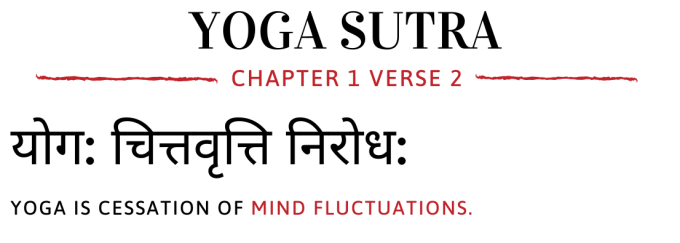
In ’51 Sutras’ of the first chapter of Yoga Sutra, Patanjali has explained what actually yoga is! As yoga ultimately is the culmination of Samadhi, this chapter is named Samadhi Pada. Patanjali began with these sutras to enlighten the Sadhaka’s (seeker) inner soul.
Sutra 1.1 to 1.4 points around the definition of yoga in terms of mental purification
- Sutra 1.5 to 1.11 tells about five mental fluctuations that yoga diminishes.
- Sutra 1.12 to 1.16 explain how to reach the state of yoga by bringing balance in persistence & serenity
- Sutra 1.17 to 1.18 defines concept of samadhi & samskara (result of our Karma)[efn_note] What Are Samskaras https://yogainternational.com/article/view/what-are-samskaras [/efn_note] on various level
- Sutra 1.19 to 1.22 describe kinds of seekers & roles of devotion, will, & memory in the yoga journey.
- Sutra 1.23 to 1.29 explains the nature & importance of Ishvara (God) & OM (sacred sound) as a symbol of God.
- Sutra 1.30 to 1.32 points out 9 obstacles faced by a seeker in the journey of yoga.
- Sutra 1.33 to 1.39 describes the methods to deal with these obstacles.
- Sutra 1.40 to 1.51 Once Chitta stabilizes from obstacles, these sutras lead the seeker towards the highest experience through different Samadhi.
2nd Chapter: “Sadhana Pada” Explains Steps to Union
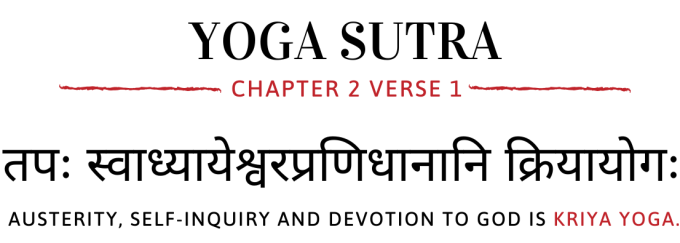
The second chapter of Patanjali Yoga Sutra contains 55 sutras that are about all the instructions and guidelines we have to follow while performing yoga. Sadhna Pada describes the Kriya Yoga (yoga of action) and Ashtanga Yoga (eight-limbed yoga).
- Sutra 2.1 to 2.2 is an introduction to Kriya Yoga [efn_note] what is Kriya Yoga https://www.yogajournal.com/yoga-101/intro-yoga-philosophy-tap-heat [/efn_note]
- Sutra 2.3 to 2.9 tells about the five psychological afflictions ( five Kleshas)
- Sutra 2.10 to 2.11 explains how to eliminate Kleshas (spiritual burden).
- Sutra 2.12 to 2.16 describe the cause and origin of Klesha and how it is related to Karma (our actions or deeds) and Vritti
- Sutra 2.17 to 2.26 tells how the Klesha, the cause of suffering is treated.
- Sutra 2.27 to 2.29 is an introduction to the Eight limbs of yoga (Ashtanga Yoga).
- Sutra 2.30 to 2.45 is a detailed explanation of Yama and Niyama.
- Sutra 2.46 to 2.48 describes Asana.
- Sutra 2.49 to 2.52 tells the concept of Pranayama.
- Sutra 2.53 to 2.55 explains what is Dharana.
3rd Chapter: “Vibhuti Pada” Explains Powers of Yoga
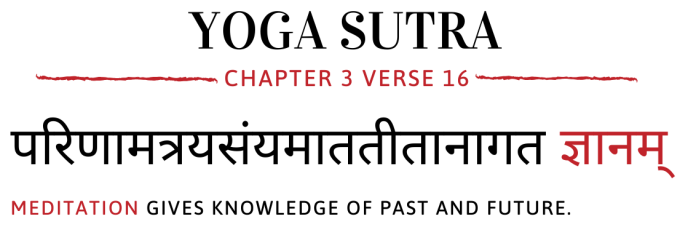
Vibhuti Pada is a collection of 56 sutras that tells the benefits that one can acquire through Yoga. The word Vibhuti is a Sanskrit word for ‘power’ or ‘manifestation’. As this chapter tells the powers that can be acquired by yoga, this chapter is named, Vibhuti Pada. This chapter starts by telling the rest of the three limbs of yoga.
- Sutra 3.1 to 3.3 tells the last three limbs of yoga, Dharana, Dhyana, and Samadhi respectively.
- Sutra 3.4 to 3.9 explains what is Samyama (holding together) [efn_note] Samyama https://en.wikipedia.org/wiki/Samyama [/efn_note].
- Sutra 3.10 to 3.16 addresses Parinama (transformation)[efn_note] what are Parinama https://www.yogapedia.com/definition/5722/parinama [/efn_note] and its types.
- Sutra 3.17 to 3.49 is all about the Siddhis (powers) that Yoga provides us.
- Sutra 3.50 to 3.56 introduces with the Kaivalya [efn_note] what is Kaivalya http://sivanandaonline.org/public_html/ [/efn_note](liberation)
4th Chapter: “Kaivalya Pada” Explains Concept of Liberation
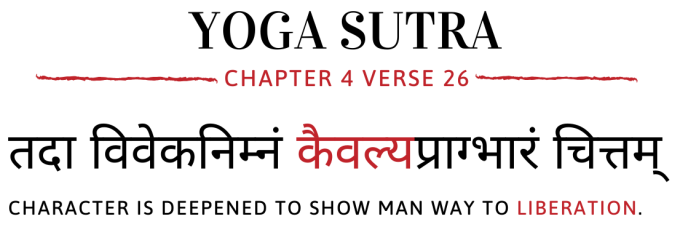
A collection of 34 sutras known as the fourth or final chapter of the Patanjali Yoga Sutra describes the goal of yoga or the idea of liberation. The Sanskrit word Kailavya’s direct translation is “isolation” or “detachment.”
This chapter’s title, Kailavya Pada, refers to the separation or freedom of the soul from the corporeal world’s snare.
- Sutra 4.1 to 4.3 tells the ways to attain Siddhi[efn_note] Siddhi https://en.wikipedia.org/wiki/Siddhi[/efn_note] (fulfillment, accomplishment)
- Sutra 4.4 to 4.6 addresses the power and ability of Chitta.
- Sutra 4.7 to 4.8 tells about actions and Karma (our actions or deeds).
- Sutra 4.9 to 4.11 explains what are desires and their consequences.
- Sutra 4.12 to 4.14 tells about the Tri-Gunas.
- Sutra 4.15 to 4.28 describes the method to remove all the obstacles on the way to liberation.
- Sutra 4.29 to 4.33 explains all the changes after reaching the stage of liberation.
- Sutra 4.34 tells the feeling of Kaivalyam (liberation).
What are the first 4 yoga sutras with meaning?
Sadhana Pada outlines the principles of Ashtanga yoga, Kriya yoga, and Karma. It also introduces the Eight Limbs of Yoga with a focus on the first six limbs – Yamas (ethical standards), Niyamas (self-discipline), Asana (yoga postures), Pranayama (breath control), Pratyahara (withdrawal), and Dharana (concentration).
Where is 4 the origin of yoga?
Where does yoga come from? Yoga’s origins can be traced to northern India over 5,000 years ago. The word yoga was first mentioned in ancient sacred texts called the Rig Veda. The Vedas are a set of four ancient sacred texts written in Sanskrit.
Who is known as the father of yoga?
Patanjali is known as the father of modern yoga. In some parts of India, Tirumalai Krishnamacharya is also considered the father of modern yoga.
Conclusive words
Discipline is the main theme of the Yoga Sutras and the life of Patanjali. Yoga needs self-control. When it comes to our joy and happiness, there is no need for discipline. Discipline is not necessary for us to engage in activities that make us happy and relaxed.
We seek cover whenever the sun is really strong. Right? We do this because it makes us happy and relaxed, not because doing so is against the law while the sun is out.
Actually, we require self-control when we do something less pleasurable, something we are not really delighted to accomplish, but the outcome is beneficial to us. Although consuming a lot of fast food is bad for our health, we nevertheless enjoy it. In order to maintain our health, we must practice self-control and limit our consumption of fast food.
Yoga should therefore be practiced with discipline if you want to get the desired results.














